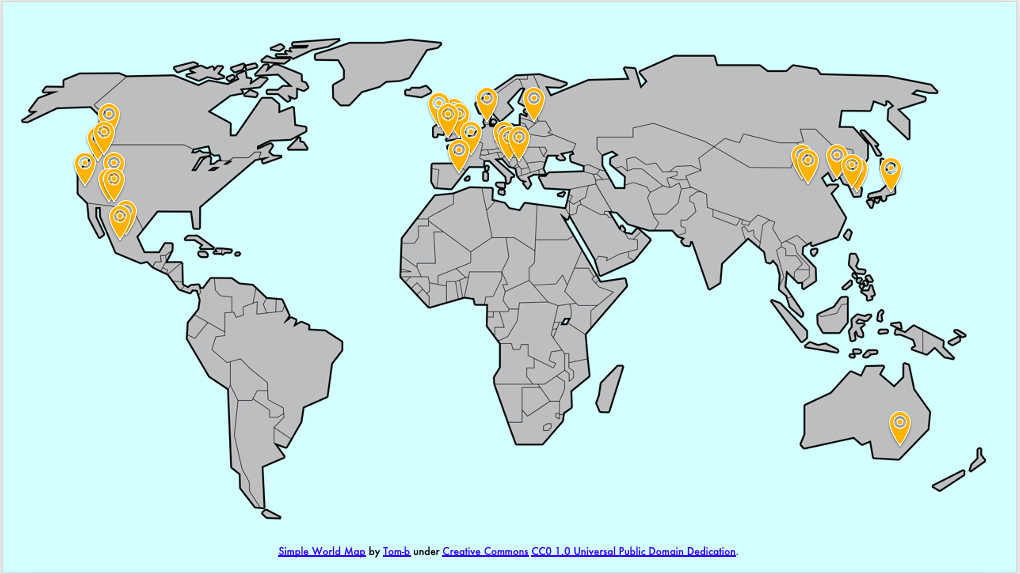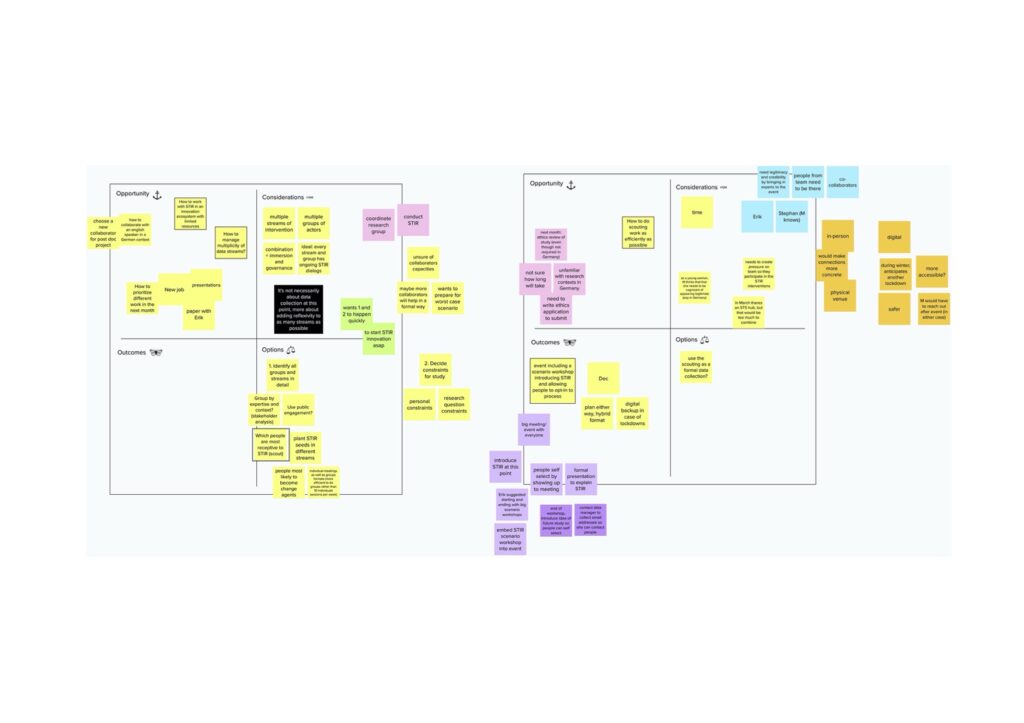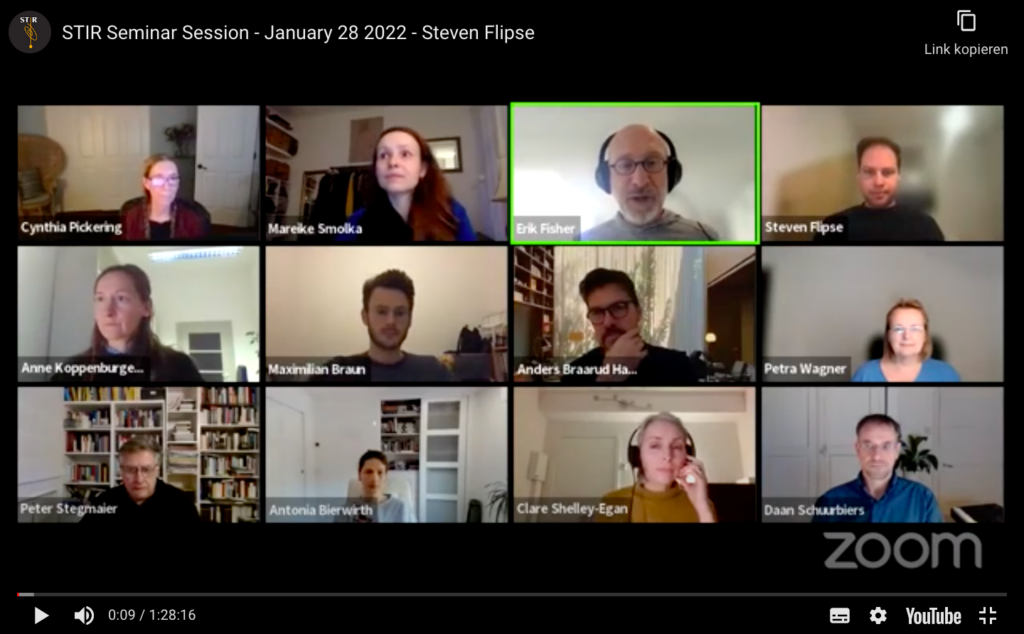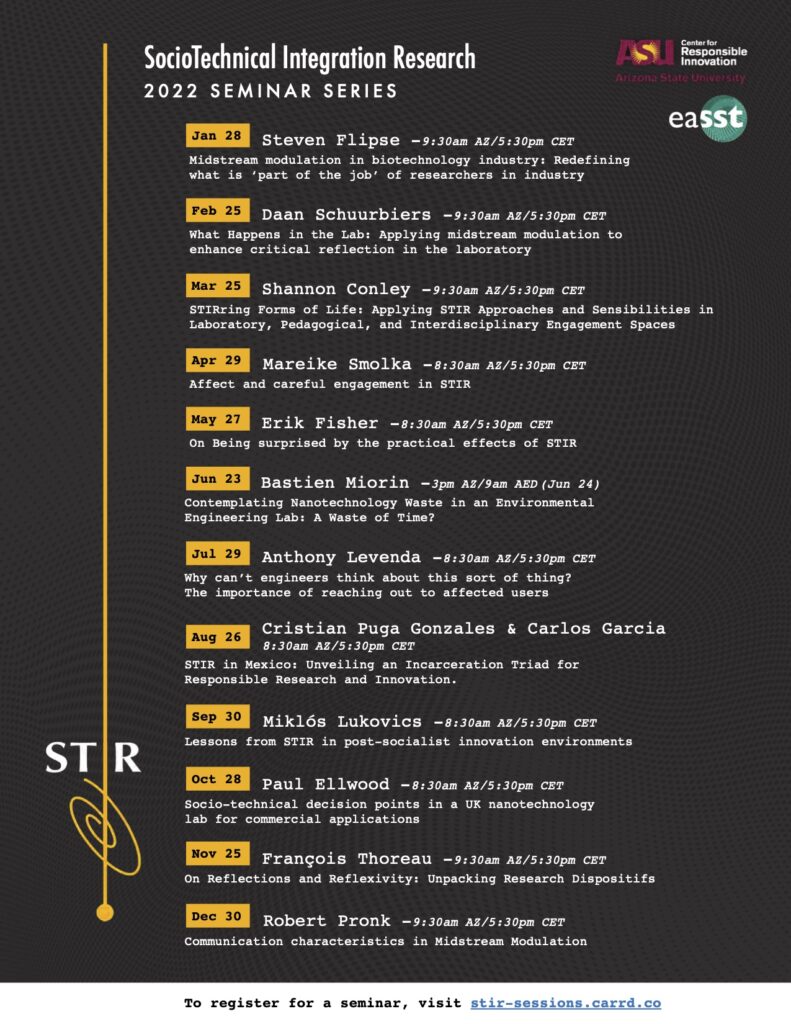In a recently published special issue on “RRI Futures,” van Oudheusden and Shelley-Egan (2021) emphasize that the reflexive questioning of science and technology has become ever more urgent. In light of the COVID-19 pandemic, climate change debates, and the emergence of ‘post-truth’ politics, STS scholars following responsible research and innovation (RRI) agendas need to reinforce their efforts to open up reflexive spaces where the social shaping of science, technology, and innovation becomes an object of collaborative inquiry and critical reflection. Although more than a decade of research under the label ‘RRI’ has been invested in such efforts, reflexive spaces in science and technology development have remained rather small and marginal. Institutional path dependencies separating the ‘two cultures’ (McCormick et al. 2012; Viseu 2015), resilient norms that posit the social beyond scientists’ and engineers’ spheres of responsibility (Cech 2014), and managerial reforms of the university system expected to increase output and efficiency through auditing and ranking structures (Fochler 2016; Shore 2008) are among the reasons why time, space, and resources for reflection are curtailed across technoscientific disciplines and professions (Felt 2017).
These developments have urged us to take stock of the accomplishments and shortcomings in opening up and preserving reflexive spaces in Socio-Technical Integration Research (STIR). STIR is a collaborative research method that studies the role of scientists and engineers in the social shaping of science, technology, and innovation (Fisher 2007; Fisher and Schuurbiers 2013). For this purpose, STIR commonly embeds a researcher from the social sciences or humanities into a laboratory space to stimulate reflections among technoscientific experts on the societal dimensions of their decision-making. The primary aim of the collaborative process is to understand the nature and limitations of expert capacities to participate in the normative governance of research and innovation in society. A secondary effect of collaborative inquiries across socio-technical divides is the expansion of such capacities. This effect has been documented in multiple scientific articles that resulted from more than 80 STIR studies conducted in over 20 countries on four continents. To initiate a discussion on the successes and failures of a selection of these studies, we launched the STIR Seminar Series in January 2022.

STIR seminars and practice lab
The STIR Seminar Series comprises 12 talks by experienced STIR scholars who present and discuss studies circulated in advance among seminar participants. The talks take place online every last Friday of the month in 2022. Social scholars, policy makers, and professionals who are interested in STIR are welcome to join. The aim of the seminar series is to provide opportunities for learning, connecting, and growing a diverse STIR community worldwide. To facilitate hands-on learning, the seminar series is complemented with a practice lab for STIR researchers. The term ‘practice lab’ puts emphasis on two features of space. On the one hand, it accentuates that social researchers, just like natural scientists, require a space (if only digital) where they can identify as part of a research group and repackage individual scholarly activities as team work (cf. Ku and Zehr 2022). On the other hand, it acknowledges that social researchers need to actively create reflexive spaces for themselves where they can practice, refine, and rethink their own methods. In this spirit, the practice lab offers opportunities to gain practical experience in using the decision protocol, a methodological core component of STIR that helps structure and map decision-making processes in real-time.

While the practice lab helps train a future generation of STIR researchers, the seminar series is meant to provide a historical look at how STIR has evolved over time. Seminal STIR studies that laid the foundations of the method, expanded its scope of application, and contributed to its conceptual repertoire are presented during the seminar series. By delving into previous STIR activities, shedding light on their strengths and pitfalls, we seek to illuminate possible pathways for its future development.
Tracing the history of a method
In the first half of the STIR seminar series, five presentations reconstructed the history of STIR since the method’s development in the early 2000s. The first pilot study (Fisher 2007) was presented by Erik Fisher, the developer of STIR and the moderator of the seminar series. In the early days of refining the conceptual and methodological approach of STIR, Fisher worked together with Daan Schuurbiers. During a seminar, Schuurbiers shared his experiences of conducting one of the earliest comparative STIR studies (Schuurbiers 2011). He was part of a group of 20 doctoral students, 10 of whom each carried out two paired STIR studies while the other 10 students each conducted one STIR study (for a total of 30 STIR studies), thanks to a National Science Foundation award that Erik Fisher and Dave Guston received for this purpose. The paired STIR studies sought to assess and compare the varying pressures on technoscientific experts as well as their capacities to integrate broader societal considerations into their work. Among the students conducting these studies were Steven Flipse and Shannon Conley whose seminar presentations traced how STIR became introduced into wider fields of application, including industry (Flipse et al. 2013) and pedagogy (Conley and Fisher 2019). Lastly, Mareike Smolka presented a recent STIR study (Smolka et al. 2021), which sheds light on one of the blind spots in prior integrative research: the role of the body and affective labor. In what follows, the aforementioned seminar presentations and audience discussions will be summarized in more detail.
Erik Fisher’s seminar presentation recounted the origin story of STIR as a response to the 21st Century Nanotechnology Research and Development Act (US Congress 2003), which required that “research on societal concerns” was “integrated with nanotechnology research and development” (p. 117). As the idea of integration across socio-technical boundaries had historically been contested, Fisher operationalized the concept in the 12-week STIR program which allowed researchers who might have disagreed on the exact nature of integration to work together in an open-ended, collaborative manner. He developed the program from within the Thermal and Nanotechnology Laboratory at the University of Colorado in Boulder, where he had conducted participant observation, interviews, and archival research for three years until he tested STIR with three graduate engineers in 2006. In his seminar talk, he emphasized how the effects of the pilot study hit him by surprise. Although he had designed STIR as a method of assessment, it “miraculously turned out to be a tool for intervention” for it helped align the material practices of one of the graduate engineers with broader environmental concerns. As Fisher solely asked probing questions, refraining from any “value advocacy” (cf. Shilton 2014), the introduction of environmental concerns appeared “miraculous.” The “miracle” was interrogated in the seminar discussion: which aspects of STIR create practical collaborative effects – the decision protocol, the characteristics of the STIR researchers, or the maieutic interplay of questions and answers in STIR dialogues? To answer this question, discussants suggested, future research could examine the micro-dynamics and interpersonal relations that function as carriers of STIR interactions, although some of the unintended effects of STIR can perhaps never be fully understood.
Whereas Fisher framed STIR as a method for research and assessment with practical “side effects,” Daan Schuurbiers’ interest was sparked primarily by these effects. His PhD research at Delft University in the Netherlands from 2005 to 2010 sought to “empower scientists in their social responsibility.” He decided that STIR could be a suitable means for this end after meeting Fisher on a train in the Netherlands. In the aftermath of this train ride, Fisher invited Schuurbiers to Arizona State University in the United States to conduct a STIR study in the School of Life Sciences, which Schuurbiers compared to a second STIR study carried out at the Department of Biotechnology at Delft University. Understanding himself somewhere in-between on a spectrum that has a critical social scientist on one end and an intervention-oriented action researcher on the other, Schuurbiers later decided to transfer his knowledge on STIR into consultancy work. He described this transition as follows: “I love the rigor of science, but I do not like that academic careers are determined by the papers we write . . . I rather want to make practical effects possible and ‘STIR’ as much as I can to enhance social responsibility in research and innovation.” A few years after completing his PhD, he founded De Proeffabriek, a consultancy for responsible innovation, where he has further leveraged the potential of STIR and other interventionist methods to change the research system (www.proeffabriek.nl).
As a “first-generation” STIR researcher who had learned the method from Fisher, Schuurbiers became involved in training the “second generation,” including Steven Flipse. Flipse completed his PhD research from 2009 to 2013 in Delft where he introduced STIR to industry – a context which had received little attention by STIR researchers at the time. His STIR study in a multi-national biotechnology company indicates that industrial actors became increasingly interested in STIR as soon as they perceived that the method offered “added value” for the company in terms of efficiency and revenue. Flipse revealed during the seminar that, as a result of his STIR intervention, the company saved money because they decided to stop a specific line of research and reallocated the budget to other projects. According to Schuurbiers (2011), if STIR advances the (scientific or economic) agendas of participants, they are likely to show more willingness to critically reflect on societal considerations and public interests. Such observations stimulated discussions in the audience about whether STIR stabilizes contemporary technoscientific paradigms and socioeconomic systems or whether it can subtly disrupt hegemonic structures from within.

Shannon Conley engaged in STIR research at roughly the same time as Flipse. While her initial STIR studies took place in reproductive genetics laboratories in Canada and the UK, her research focus on competence development and learning helped introduce STIR into educational contexts later on in her academic career (York and Conley 2018). She is convinced that students can benefit from approaches that deconstruct disciplinary silos, develop capacities for critical thinking, and competences for interdisciplinary collaboration. This conviction partly results from her own experience as a learner in laboratories where her STIR collaborators taught her material practices and linguistic skills characterizing their epistemic culture. By acknowledging her own disciplinary blind spots and by actively participating in laboratory bench work, Conley transitioned from being an ‘outsider’ to eventually mentoring student biologists in material lab practices. In contrast to the majority of STIR studies conducted thus far, Conley pays specific attention to how her shifting positionalities shaped the collaborative research process. In her presentation, she pointed out that her collaborators initially suspected that she had journalistic interests and jokingly called her a “lab psychologist.” She only became a valued lab team member after she had overcome their initial wariness by building a relationship of trust and mutual support through ongoing STIR interactions.
Experiences of wariness, ambivalence, insecurity, and other affective disturbances are the starting point of Mareike Smolka’s STIR research. In a co-authored article, Smolka, Fisher, and Hausstein (2021) analyze how attending to affective disturbances, more specifically disconcertment (Verran 2001), became a resource for interdisciplinary knowledge production in three independent STIR studies. In the seminar presentation, Smolka focused on her experiences of disconcertment when conducting STIR research in a clinical trial on mindfulness meditation in the French Normandy. By engaging in affective labor to recognize, amplify, and minimize disconcertment, Smolka navigated her liminal position as insider/outsider in several modalities of STIR: regular cross-disciplinary dialogues, a group discussion, and a reflexive seminar session. In each modality, working with and through disconcertment stimulated reflexivity about taken-for-granted disciplinary norms, latent socio-ethical considerations, and more socially responsive courses of action. Whereas seminar participants were interested in systematic strategies for detecting and engaging with disconcertment in integrative research, Smolka pointed out that working with affect depended on interpersonal, embodied sensibilities which could be cultivated but not formalized. Moreover, in response to a question about emotional bias, Smolka emphasized that she did not consider affect as a superior source of knowledge. Instead, she argued, that drawing on multiple forms of knowledge could help develop a more holistic and socially informed view on technical decisions, especially in academic contexts where bodies tend to be ignored or disciplined for the sake of ‘objective’ reasoning.
Future seminars
Between Smolka et al.’s research on the affective substrates of STIR collaborations and Fisher’s initial pilot study, 15 years passed. In the remainder of the 2022 seminar series, we will fill this timespan with a mix of presentations on earlier and more recent STIR studies. Paul Ellwood will share experiences of his doctoral research within the aforementioned coordinated set of paired STIR studies that took place more than 10 years ago. Anthony Levenda will introduce the STIR Cities project, which received a National Science Foundation award in 2015 to bring STIR from the laboratory to the city to help key stakeholders imagine alternative forms of social and technological order in constructing smart energy systems. Robert Pronk, a “third-generation” STIR researcher trained by Flipse, will illuminate several characteristics of the communication between STIR researcher and participants. While Pronk will zoom into the communicative underpinnings of the STIR process, the presentations by Lukovics as well as by Puga Gonzales and Garcia will discuss how cross-disciplinary communication unfolds in different national contexts: Lukovics will draw lessons from STIR research in post-socialist innovation environments; Puga Gonzales and Garcia will elaborate on the cultural as well as structural challenges they faced when ‘STIRring’ research groups in Mexico. On yet another continent, Bastien Miorin will talk about how his STIR training has shaped his career as a risk manager in Melbourne, Australia, and how it helped him integrate discussions on societal dimensions of innovation in large-scale infrastructure projects and complex organizations. Lastly, François Thoreau will offer a critical perspective on STIR, calling for greater reflexivity not only among technoscientific experts but also among STIR researchers about the tacit assumptions informing their research practices.

To sign up for upcoming seminars, access video recordings of previous seminars, and find more information about the STIR practice lab, please visit the website stir-sessions.card.co.
Acknowledgements
We highly appreciate the contributions from all the seminar speakers (see overview on the flyer above). We are also grateful to our co-organizers who have advertised the seminar series within their scholarly as well as professional networks. Many thanks go to Antonia Bierwirth, Steven Flipse, Alexandra Hausstein, Miklós Lucovics, Michiel van Oudheusden, Mone Spindler, Peter Stegmaier, and Alan Tkaczyk (alphabetical order). Finally, we thank EASST for supporting the STIR seminar series with the EASST Fund 2021–22 as well as the National Science Foundation whose awards (#0849101 and #1535120) supported some of the studies presented during the seminar series.
References
Cech, Erin A. 2014. “Culture of disengagement in engineering education?” Science, Technology, & Human Values 39(1): 42–72.
Conley, Shannon N., and Erik Fisher. 2019. “Developing a Theoretical Scaffolding for Interactional Competence: A Conceptual and Empirical Investigation into Competence Versus Expertise. In The Third Wave in Science and Technology Studies, edited by David S. Caudill, Shannon N. Conley, Michael E. Gorman, and Martin Weinel, 235–253, London: Palgrave Macmillan.
Felt, Ulrike. 2017. “‘Response-able Practices’ or ‘New Bureaucracies of Virtue’: The Challenges of Making RRI Work in Academic Environments.” In Responsible Innovation 3, edited by Lotte Asveld, Rietje van Dam-Mieras, Tsjalling Swierstra, Saskia Lavrijssen, Kees Linse, and Jeroen van den Hoeven, 49–68. London: Springer International Publishing.
Fisher, Erik. 2007. “Ethnographic Invention: Probing the Capacity of Laboratory Decisions.” NanoEthics 1(2): 155–165.
Fisher, Erik, and Daan Schuurbiers. 2013. “Socio-technical integration research: collaborative inquiry at the midstream of research and development.” In Early engagement and new technologies: opening up the laboratory, edited by Neelke Doorn, Daan Schuurbiers, Ibo van de Poel, and Michael E. Gorman, 97–110. Dordrecht: Springer.
Flipse, Steven M., Maarten C. A. van der Sanden, and Patricia Osseweijer. 2013. “Midstream Modulation in Biotechnology Industry: Redefining What is ‘Part of the Job’ of Researchers in Industry.” Science and Engineering Ethics 19: 1141–1164.
Fochler, Maximilian. 2016. “Variants of Epistemic Capitalism: Knowledge Production and the Accumulation of Worth in Commercial Biotechnology and the Academic Life Sciences.” Science, Technology, & Human Values 41(5): 922–948.
Ku, Sharon Tsai-hsuan, and Stephen Zehr. 2022. “Disciplining interdisciplinarity: Infrastructure, identity, and interdisciplinary practice in nanoELSI research.” Science and Public Policy. https://doi.org/10.1093/scipol/scac025.
McCormick, Jennifer Blair, Angie M. Boyce, Jennifer M. Ladd, and Mildred Cho. 2012. “Barriers to considering ethical and societal implications of research: perceptions of life scientists.” AJOB Primary Research 3(3): 40–50.
Schuurbiers, Daan. 2011. “What happens in the Lab: Applying Midstream Modulation to Enhance Critical Reflection in the Laboratory.” Science and Engineering Ethics 17: 769–788.
Shilton, Katie. 2014. “This is an Intervention: Foregrounding and Operationalizing Ethics during Technology Design.” In Emerging Pervasive Information and Communication Technologies, edited by Kenneth D. Pimple, 177–192. Dordrecht: Springer.
Shore, Cris. 2008. “Audit culture and Illiberal governance: Universities and the politics of accountability.” Anthropological Theory 8(3): 278–298.
Smolka, Mareike, Erik Fisher, and Alexandra Hausstein. 2021. “From Affect to Actions: Choices in Attending to Disconcertment in Interdisciplinary Collaborations.” Science, Technology, & Human Values 46(5): 1076–1103.
US Congress. 2003. “21st Century Nanotechnology Research and Development Act.” 108th Congress Public Law, pp. 108–153.
van Oudheusden, Michiel, and Clare Shelley-Egan. 2021. “RRI Futures: learning from a diversity of voices and visions.” Journal of Responsible Innovation 8(2): 139–147.
Verran, Helen. 2001. Science and an African Logic. Chicago: Chicago University Press.
Viseu, Ana. 2015. “Caring for Nanotechnology? Being an Integrated Social Scientist.” Social Studies of Science 45(5): 642–664.
York, Emily, and Shannon N. Conley. 2019. “Critical Imagination at the Intersection of STS Pedagogy and Research.” Platypus. The CASTAC Blog. Accessed on June 10, 2022. https://blog.castac.org/2019/11/critical-imagination-at-the-intersection-of-sts-pedagogy-and-research/.